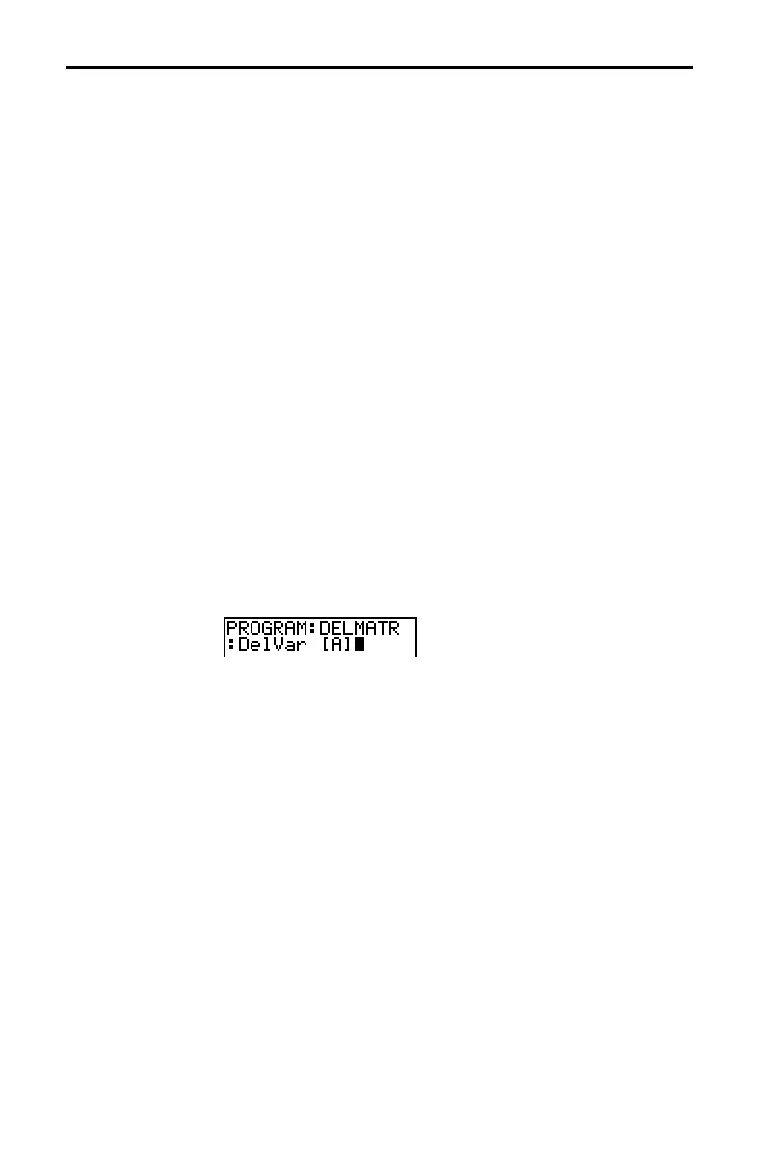Programming 16–15
82E978~1.DOC TI-83 international English Bob Fedorisko Revised: 10/26/05 1:47 PM Printed: 10/27/05 3:02
PM Page 15 of 22
Use prgm to execute other programs as subroutines (page
16.22). When you select
prgm, it is pasted to the cursor
location. Enter characters to spell a program name. Using
prgm
is equivalent to selecting existing programs from the PRGM
EXEC
menu; however, it allows you to enter the name of a
program that you have not yet created.
prgmname
Note: You cannot directly enter the subroutine name when using
RCL. You must paste the name from the PRGM EXEC menu (page
16.7).
Return quits the subroutine and returns execution to the calling
program (page 16.22), even if encountered within nested loops.
Any loops are ended. An implied
Return exists at the end of any
program that is called as a subroutine. Within the main program,
Return stops execution and returns to the home screen.
Stop stops execution of a program and returns to the home
screen.
Stop is optional at the end of a program.
DelVar deletes from memory the contents of variable.
DelVar variable
GraphStyle( designates the style of the graph to be drawn.
function# is the number of the
Y= function name in the current
graphing mode. graphstyle is a number from
1 to 7 that
corresponds to the graph style, as shown below.
1 = ç (line) 5 = ë (path)
2 = è (thick) 6 = ì (animate)
3 = é (shade above) 7 = í (dot)
4 = ê (shade below)
GraphStyle(function#,graphstyle)
For example, GraphStyle(1,5) in Func mode sets the graph style
for
Y1 to ë (path; 5).
Not all graph styles are available in all graphing modes. For a
detailed description of each graph style, see the Graph Styles
table in Chapter 3.
prgm
Return
Stop
DelVar
GraphStyle(

